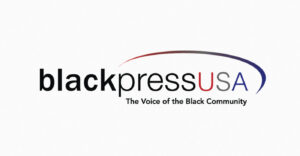A new, dual-credit robotics class for eighth graders at Douglas MacArthur Middle School in Prospect Heights is allowing students to dive deep into engineering and other STEM fields while addressing the issue of pandemic learning loss.
While the first semester of the inaugural class focused on lego robotics, the second leg of the 2022-23 school year will teach students to design, build and program a robot. Students also earn high school credit for it as part of a partnership between elementary school District 23 and High School District 214. The partnership started as a joint extracurricular robotics club where students from the feeder schools could participate at the high school level.
Advertisement
According to District 23 Superintendent Don Angelaccio, the districts worked together to create a class that had a curriculum and outcome similar to entry-level engineering classes at the high schools.
And coming off a pandemic that inhibited regular classroom education, the robotics class, and STEM education in general, accelerates learning by equipping students with problem-solving skills, Angelaccio said.
Advertisement
“You have a challenge or a problem you’re trying to solve,” he said. “You brainstorm solutions, design and test, and then you learn from those successes and failures. It creates a structure around problem-solving that adults use every day.”
Angelaccio noted the shift in education to applied skills as opposed to the previous emphasis on the theoretical steps of a research project or paper.
“For several reasons, (the new approach) better meets the needs of this generation of students,” he said. “They are tactile, and used to immediate response. So building and testing a robot for example: ‘Does it follow the code you wanted it to? Did it turn right or turn left?’ You see it immediately and those kinds of things help kids learn from the actual testing of things.”
The dual-credit class has no prerequisites, but it does have to fit into students’ schedules without compromising core classes. If students take band or orchestra and Spanish, for example, they likely won’t have space for robotics.
Filip Dudic, who teaches the class of 17 eighth graders, said its obvious why a STEM class might help students bounce back from the pandemic.
“I think about my younger son and how being home for so long made it hard to go back. Having something to have fun with makes it easier,” Dudic said. “There’s a lot of choice in STEM classes, a lot of projects, and not necessarily the same thing day to day. If we’re doing a 3D printing project, you could be making a keychain or an ornament, or it could be anything.”
The robotics class incorporates other subjects like math, which many students struggle to see “the point of,” Dudic said.
“I try to always point out, when we’re doing something with 3D modeling or coding, how it relates to what they’re going to learn in high school geometry or algebra class,” Dudic said. “They like to see the real-world applications. I used to get that question as a math teacher all the time: ‘When are we ever going to use this?’”
Advertisement
Dudic said he was fortunate to get STEM-teaching training through the Project Lead the Way curriculum at his previous school, Oliver McCracken Middle School in Skokie District 73.5. Project Lead the Way is one of the leading providers of innovative STEM education curricular programs used in middle and high schools across the U.S., and it’s used at High School District 214, where Dudic’s middle schoolers are headed.
District 23 also partners with District 214′s WildStang Robotics Program, sharing space at MacArthur with the high school students mentoring the younger kids.
Dudic is an assistant coach and teacher for the high school robotics team, allowing him to seamlessly conduct the dual-credit program while keeping an eye on the high school curriculum to better prepare his middle school students.
Only a few students came to Dudic’s robotics class with little or no understanding of STEM. Most sixth graders take Dudic’s nine-week applied tech course, which allows him to more quickly move on from the basics into advanced topics.
One of the eighth graders taking Dudic’s Robotics class is Claudia Glinko, who is especially excited about “graduating” from the class’ first-semester emphasis on lego robotics to coding a “real robot.”
“It’s like we’re onto the next level this semester,” she said. “We’re ready for it and we know we can ask questions and figure it out together.”
Advertisement
Glinko, who grew up watching her dad use computers and technology to fix car engines, has already started toying with the idea of a career in a STEM field and has plans to take similar classes in high school.
“You don’t realize how many different parts of STEM there are,” she said. “Robotics is not just about coding; its about science and math.”
The merging of concepts can be beneficial in more ways than one, said MacArthur Middle School Principal Cam Nystrom.
“Filip is a former math teacher so he always has a math lens to it, and able to bring math concepts that students may have missed out on during the pandemic and make it more of a gap-filler type class the way he’s teaching it,” Nystrom said.
Students working together and asking each other questions about how they did this or that enriches the learning experience and propels it forward, Nystrom said.
Juliana Firnstein, another student in Dudic’s robotics class, said one of the best parts of the course is the “positive environment.”
Advertisement
“It is very fun just to be communicating with a bunch of people and it’s all hands-on activities,” she said. “We just finished Lego week competitions and are moving onto robot coding, and everyone is working on it together.”
Through the class, Firnstein has also become open to the idea of a career in a STEM field.
“It’s definitely made me look into my future and what I’d like to do as a career,” she said. “I’m open to the idea of engineering as a career choice. And a future in engineering will involve science and math, too.”
Nystrom said the district hasn’t eliminated traditional wood shop classes. A lot of handheld saws and machines have been replaced with 3D printers, but students are welcome to use both.
Robotics was fashioned as a pilot class to see what can be improved, but administrators are hoping to continue it.
Nystrom said educators have their eye on a potential merger between the sixth, seventh and eighth grade STEM classes with the art department.
Advertisement
“It doesn’t matter if you’re making a pot with clay or a 3D printer; there’s still elements of design and balance of structure,” he said.
Nystrom said the creative concepts would tap into the STEAM part of education, which stands for science, technology, engineering, arts and mathematics.
“The difference is that arts are included, from visual arts to language arts and more,” he said. “It sparks imagination and creativity through the arts in ways that naturally align with STEM learning.”







